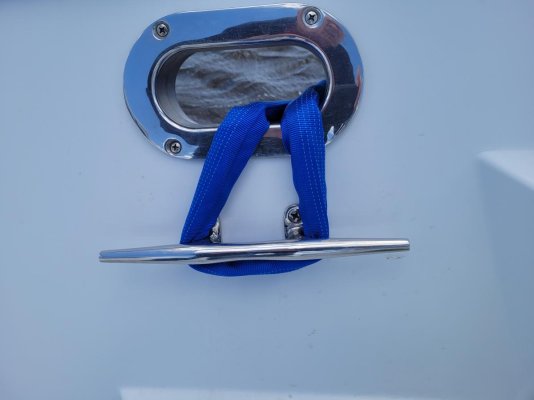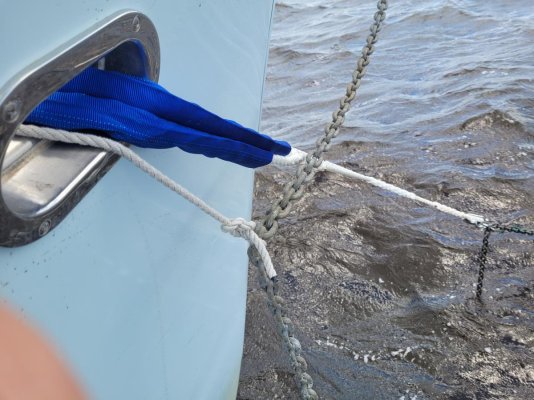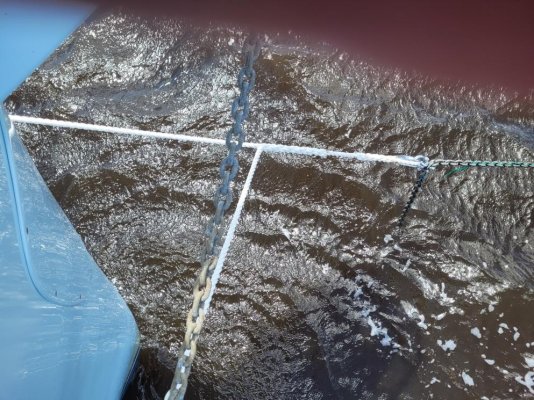HeadedToTexas
Guru
We were at anchor Saturday night and the wind picked up to 10-15 as forecasted. It was off shore and our anchor was well set, but it kept me awake for a while thinking about the other boats nearby.
Escape swings what seems like a lot to me with (and without) the bridle and I wonder if that is because my bridle is too short. It hangs so that the soft shackle connecting it to the anchor chain is just above the water surface when the chain is slack. I see some whose bridle hook is well below the surface. Is there a correct length?
Escape swings what seems like a lot to me with (and without) the bridle and I wonder if that is because my bridle is too short. It hangs so that the soft shackle connecting it to the anchor chain is just above the water surface when the chain is slack. I see some whose bridle hook is well below the surface. Is there a correct length?



